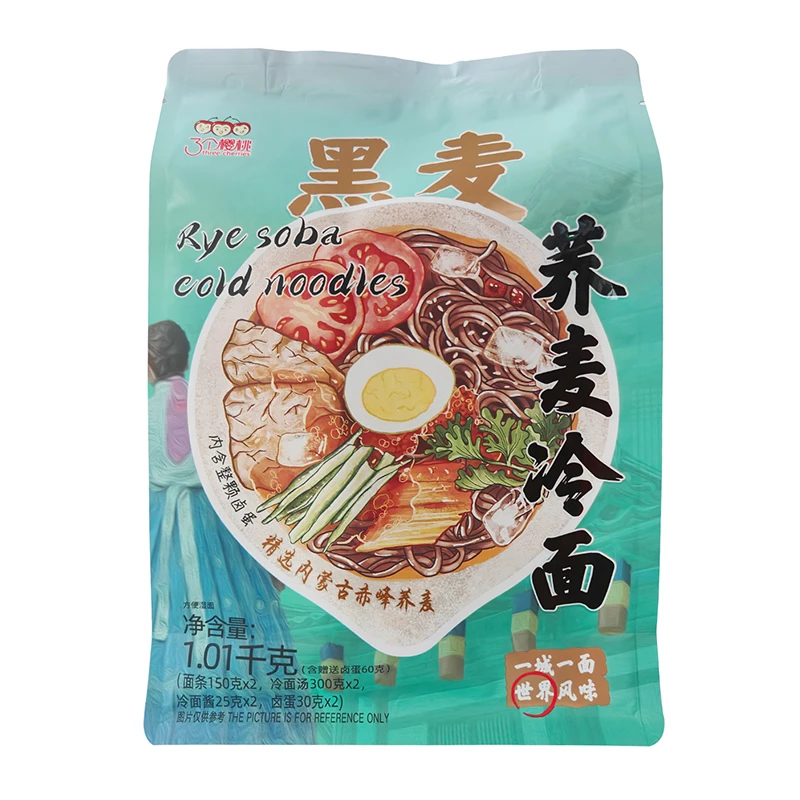cold soba noodles
The Delight of Cold Soba Noodles A Culinary Journey
As the temperatures rise, many find themselves seeking refreshing and light meals that provide both nourishment and comfort. Among the myriad of culinary options available, cold soba noodles stand out as a delectable choice that not only satisfies hunger but also embodies the essence of Japanese cuisine. This article explores the history, preparation, serving methods, and the health benefits of this delightful dish.
A Brief History of Soba Noodles
Soba noodles, made primarily from buckwheat flour, boast a rich history in Japan that dates back several centuries. The word soba means buckwheat, which was a staple in the Japanese diet, particularly in the colder regions of the country where rice cultivation was challenging. Originally, soba gained popularity as a street food, sold by vendors who served it hot, but over the years, cold soba has emerged as a favored dish, especially during the summer months.
The preparation of soba has evolved, with artisanal techniques being passed down through generations. Handmade soba noodles are characterized by their unique texture and flavor, offering a heartier alternative to other noodle varieties. The careful process of mixing, kneading, and cutting buckwheat dough showcases the skill of the soba artisan, creating a product that is both nutritious and delicious.
Preparing Cold Soba Noodles
The preparation of cold soba noodles is a beautiful blend of simplicity and elegance. To make authentic soba, the ingredients are minimal high-quality buckwheat flour, water, and a pinch of salt. The dough is kneaded until it achieves the right consistency, then rolled out and cut into thin strands. This process requires precision, as the width of the noodles influences their texture and cooking time.
Cooking soba noodles is straightforward. They are boiled in water for a short period—usually about 4 to 6 minutes—until tender but still slightly chewy. After cooking, the noodles are immediately plunged into ice-cold water to stop the cooking process and to maintain their firm texture. This technique, known as shocking, is crucial for creating the signature cold soba experience.
cold soba noodles

Serving Cold Soba Noodles
Cold soba noodles can be served in various ways, each highlighting the noodle's versatility. One popular method is to serve the soba on a bamboo mat with a small bowl of dipping sauce known as tsuyu. This sauce is typically made from soy sauce, mirin, and dashi, lending the dish a rich umami flavor. Diners can dip the cold noodles into the sauce before each bite, allowing them to savor the contrasting textures.
Another delightful presentation features soba in a chilled broth with seasonal vegetables, perhaps garnished with slices of green onion, wasabi, or shredded nori. This dish, known as zarusoba, is refreshing and perfect for hot summer days. Some even take it a step further, adding protein such as shrimp tempura or grilled chicken for a more substantial meal.
The Health Benefits of Soba Noodles
Beyond their delightful taste and texture, cold soba noodles offer numerous health benefits. Buckwheat is an excellent source of complex carbohydrates and is rich in dietary fiber, making it a perfect option for those looking to maintain a balanced diet. Additionally, buckwheat is gluten-free, which opens the door for those with gluten sensitivities to enjoy this delicious dish.
The nutritional profile of soba includes essential vitamins and minerals, such as B vitamins, magnesium, and zinc. These nutrients play a crucial role in energy production, muscle function, and immune health. Furthermore, soba is known for promoting cardiovascular health, thanks to its high levels of antioxidants that help combat inflammation and improve circulation.
In conclusion, cold soba noodles are more than just a meal; they are a celebration of Japanese culinary heritage that captivates both the palate and the senses. With their rich history, simple preparation, and health benefits, it is no wonder that cold soba continues to be a beloved dish across the globe. As summer approaches, embracing this elegant dish can provide not only a satisfying dining experience but also a refreshing respite from the heat. Whether enjoyed at a traditional Japanese restaurant or made at home, cold soba noodles are destined to leave a lasting impression.
-
Unleash Your Inner Chef with Delectable Italian Pasta CreationsNewsAug.01,2025
-
Savor Health and Flavor: Irresistible Soba Noodles for Sale Await!NewsAug.01,2025
-
Nourish Your Body with Premium Organic Ramen - A Culinary Delight AwaitsNewsAug.01,2025
-
Elevate Your Dishes with Our Exquisite Kinds of Egg NoodlesNewsAug.01,2025
-
Dive into Flavorful Convenience with Our Ramen OfferingsNewsAug.01,2025
-
Discover Exquisite Types of Naengmyeon and Chilled Soba NoodlesNewsAug.01,2025
-
Is Whole Wheat Pasta Healthy?NewsMay.30,2025
Browse qua the following product new the we

















































































































